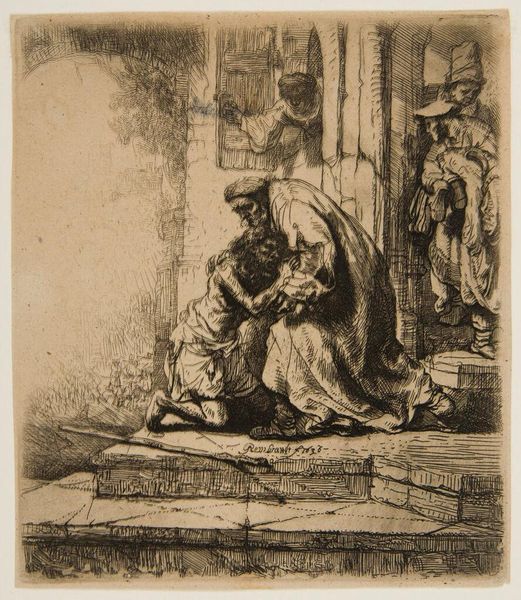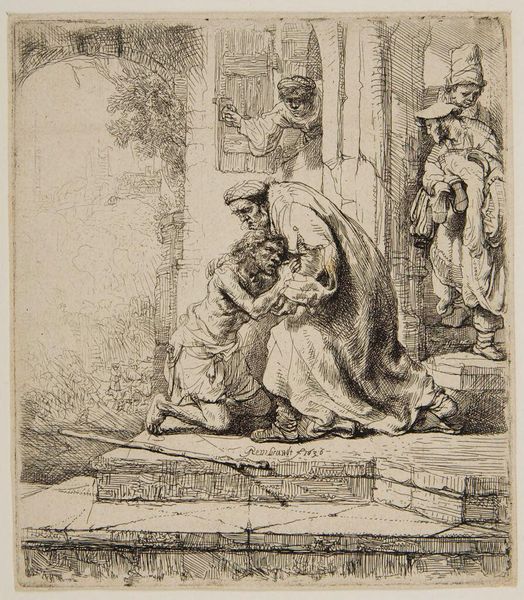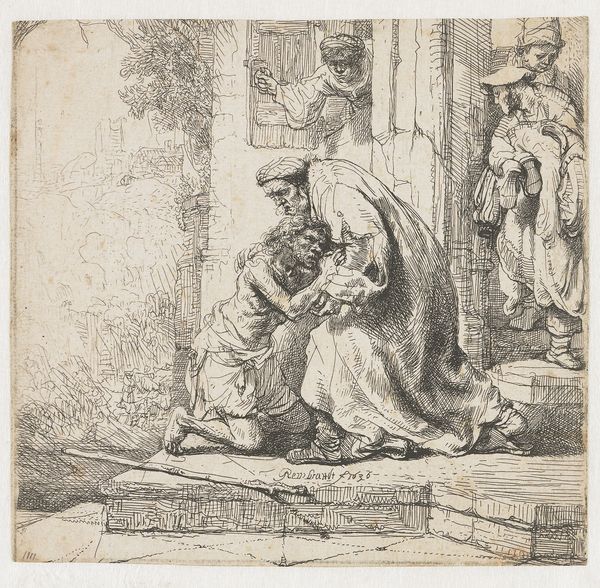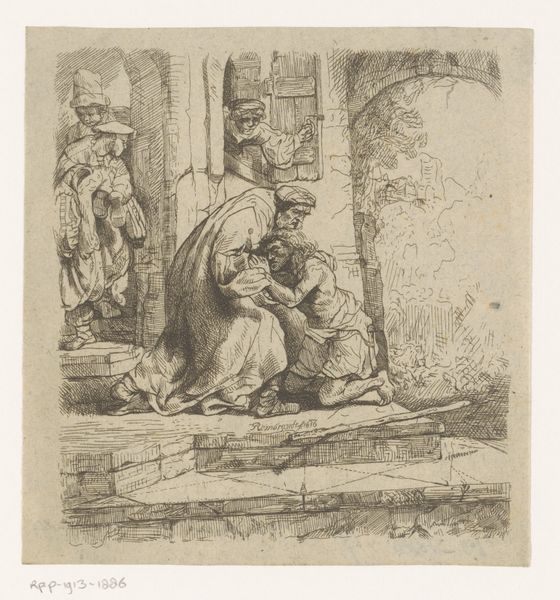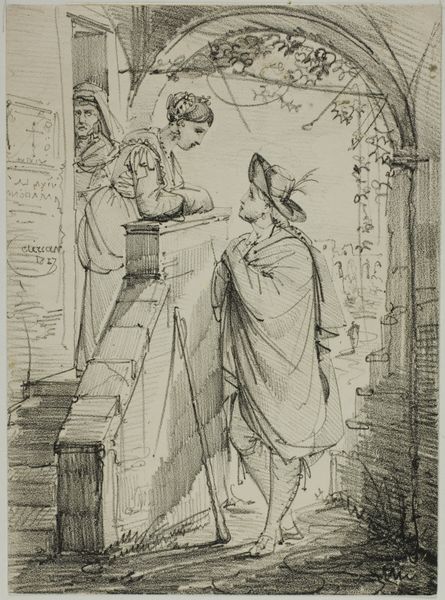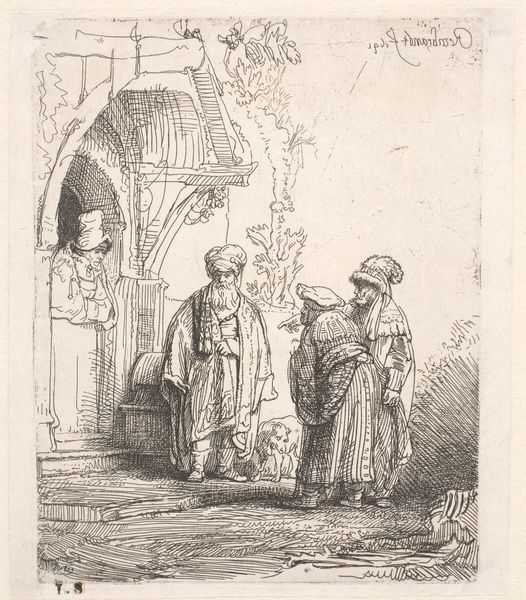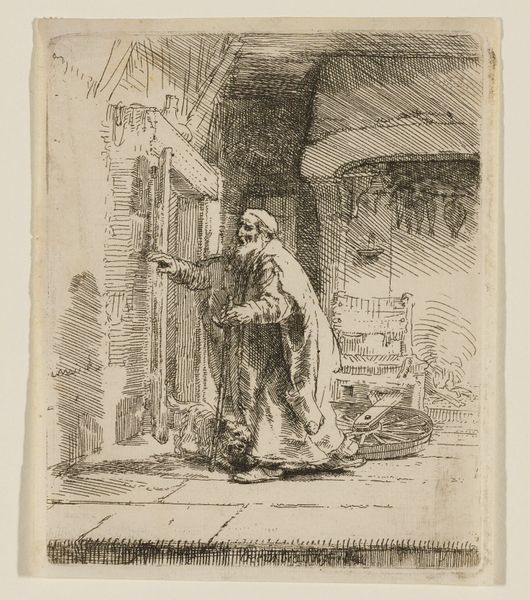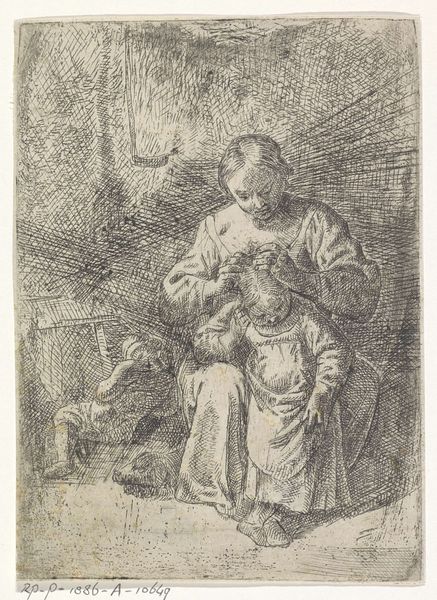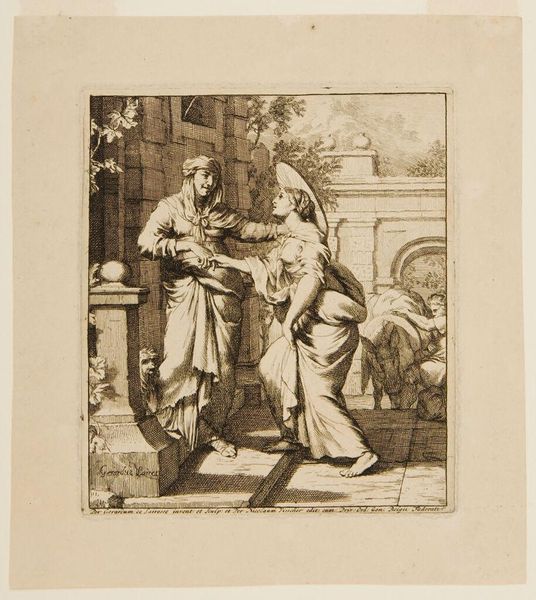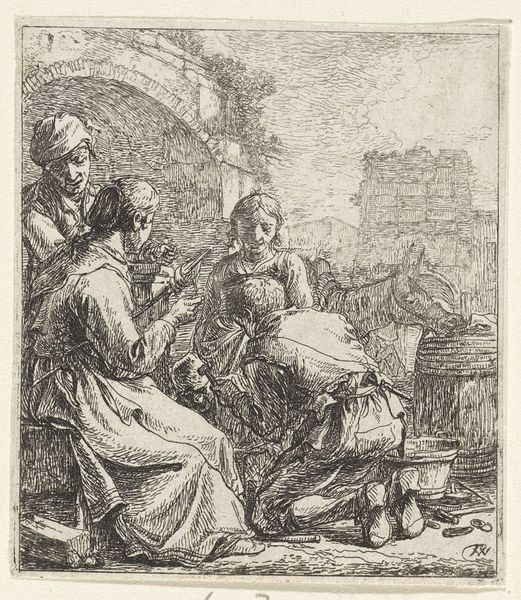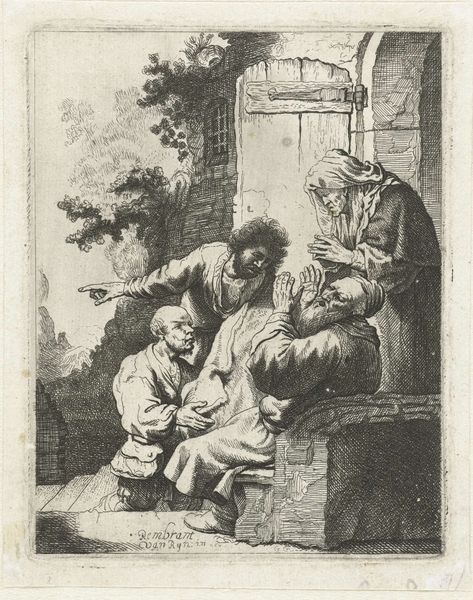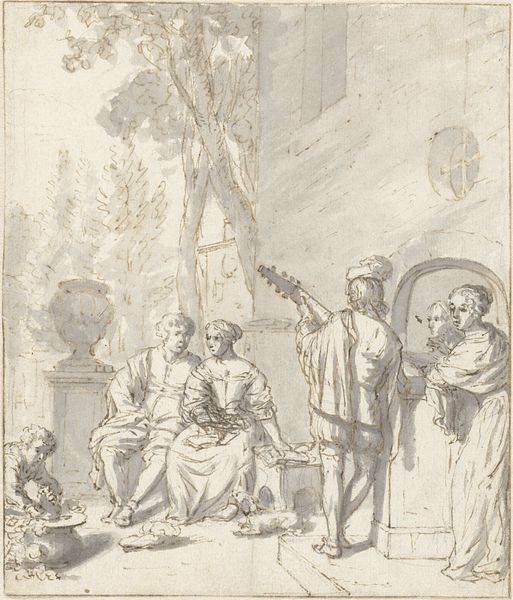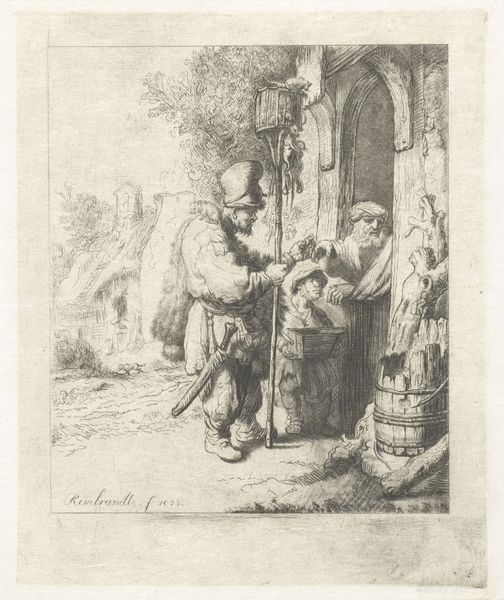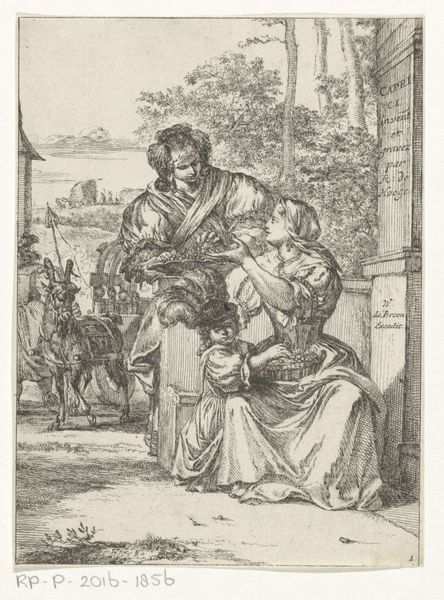
drawing, print, etching
#
drawing
#
ink drawing
#
narrative-art
#
baroque
# print
#
etching
#
figuration
#
genre-painting
#
history-painting
Dimensions: Plate: 6 1/8 × 5 7/16 in. (15.6 × 13.8 cm) Sheet: 6 7/16 × 5 9/16 in. (16.3 × 14.2 cm)
Copyright: Public Domain
Rembrandt van Rijn etched this plate, “Return of the Prodigal Son,” in 1636. Here, we witness the son’s return, marked by his kneeling, a gesture of repentance and humility before his father. The father's embrace, a motif echoing throughout art history, symbolizes forgiveness and unconditional love. Consider the universality of the embrace. In ancient Roman art, we find similar gestures representing clemency, power, and reconciliation. In Christian iconography, the embrace signifies divine grace. Here, the father's touch is not just a physical act; it is a profound spiritual reunification, engaging our deepest emotional sensibilities. The act of kneeling, too, has evolved. Once a symbol of servitude, it now signifies profound remorse. This evolution reflects how collective memory reshapes our understanding of visual symbols. The scene's psychological power lies in its ability to tap into our own experiences of guilt, forgiveness, and the yearning for acceptance. These motifs reappear across eras, continuously shaped by new contexts.
Comments
No comments
Be the first to comment and join the conversation on the ultimate creative platform.
